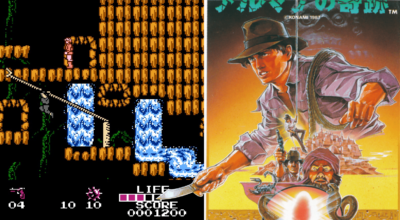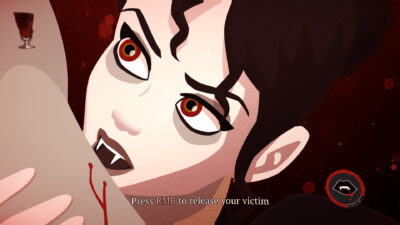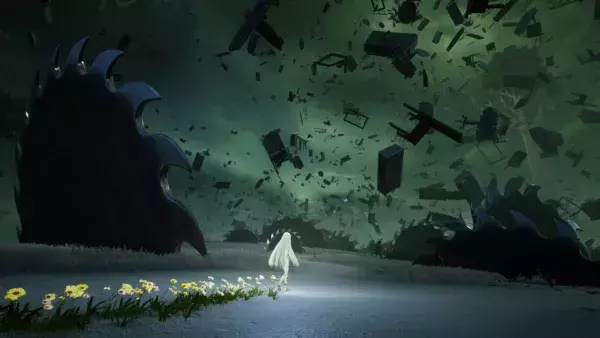
Your game trailer lives on storefronts. It’s embedded in press articles. It’s there when people are researching your game, and present at the moment of digital purchase. It could be the first time someone sees your game, or the last thing they see before they buy it. When it comes to marketing your game, the trailer is the most important asset you have.
There’s no one set way to make a trailer, but the core principles of making something effective are the same, whether you’re working on a multi-video campaign for a triple-A studio, or you’re a solo dev wanting to make a splash.
At The TrailerFarm, we’ve made game trailers and marketing assets for clients of all sizes, including Sega, Square Enix, The Chinese Room, Obsidian, and more. Here are five things we think about when we make trailers – things you should also bear in mind when it comes to making a trailer of your own.
Authenticity
Regardless of whether you’re making a launch trailer, a tutorial video, or a Kickstarter video, keep in mind your overall goal. Trailers are ultimately short-form storytelling, so define the story you want to tell about your game and work out what you want your viewers to take away from watching it.
Because you have a limited amount of time to tell your story, decide what your game’s key pillars or messages are, and show off those features at their best. Most importantly, stay authentic: don’t pretend to be what you’re not. Own your strengths, and tell that story.
Ultimately, your trailer needs to lead the viewer to try or purchase your game, so authenticity is key. Authenticity doesn’t mean that your trailer has to be made entirely from in-game footage, however.
As an example, we created a series of trailers for Two Point Hospital. At one early stage, the game wasn’t ready to be shown in full, so we created a cast of doctors and characters that sat in the wider game world Two Point Hospital lives in, and played on the humour that the game presents.
The CG element obviously wasn’t gameplay, but the spirit, messages, and humour in the trailer were authentic. As we moved through the campaign, CG elements became a consistent wrapper to present the story of the game alongside gameplay footage.
In contrast, the 2011 survival horror game Dead Island debuted with a fantastic trailer which was both emotional and cinematic. As a piece of work, it was brilliant, but it didn’t capture the essence of the final game, which was far more humorous than serious.
You don’t need to search for very long to find game trailers which don’t align with the finished product. Stay authentic to the spirit of your game, and what it is you’re showing. “The North remembers,” to borrow a quote from Game of Thrones, and so do gamers.
Open smart, end big
Gaming is booming, but there are more games available than ever before. A highly competitive landscape for games, combined with today’s accelerated consumption of media – think about how quickly you scroll through your Facebook feed – means that you may only have a couple of seconds to capture attention. So make those early seconds count.
This doesn’t necessarily mean you have to open your trailer with quick cuts of high-energy action – although it’s certainly a viable option – but it does mean that you have to begin with a moment of impact, emotion, or intrigue straight away. If you’re not presenting something immediately interesting, or making the viewer excited enough to see more, then the rest of your carefully crafted trailer will go to waste.

Pacing is key to any game trailer. Capture attention from frame one, and build the story arc throughout the trailer.
Pacing is also vital. Think about the story arc throughout and define where you want to rise and slow down, before ending on a winning, big beat. Again, this doesn’t have to be something that’s only visually spectacular, but whatever you choose must have impact and leave an impression on the viewer.
A good way to think about the pacing of your piece is to find the ‘wow’ moment in your game, and showcase that. What is it that really cuts to the core promise of your game? Is it a specific moment of gameplay, story element, or emotion? Find that, and build around it.
There isn’t a specific length of trailer that works, and the story you want to tell could be achieved effectively in anything from 30 seconds to over two minutes. If you can’t tell your story in three minutes, however, you might be cramming too much in. Aim for 90 seconds, and shorten or lengthen until it feels tight but not rushed.
Capture is king
Treat your game trailer like you’re creating a real film. Don’t just ‘point and shoot’ in the blind hope you’ll have enough to work with, but plan your shots and know what you want to capture. Regardless of whether your game is a 3D adventure, a match-three mobile title, or a 2D side-scroller, treat your trailer as if it’s a live shoot on a set with actors, and use a shot list.

Capture is king. Hold directed gameplay sessions and think about choreography to ensure you capture the best moments of your game.
Knowing what you want to capture will help you show the best elements of your game. When taking those shots, always remember to ‘break apathy’. All of your shots should excite you on some level, and say something about your game. If you’re becoming blind to your game or your trailer, get some fresh eyes on it and get honest feedback.
Also, think about putting a freecam in your game build early on. It’ll help you – or anyone else – put together shots with moments of drama, and help you show off your game in its best light. That freecam can also be used to create great screenshots, and potentially spun into a game feature for players too.
Pay attention to audio
Your game trailer is primarily a visual asset, but don’t underestimate the importance of audio on the emotion of the trailer. If visuals allow you to see another world, audio immerses you in it.
Your music choice will often be the starting point of the edit process, whether you’re using in-game music or licensing a track. Editing visual beats to audio beats is essential and powerful. Adding sound effects can also heighten key moments of drama, guide the storytelling process, or highlight a joke.
Information: how and when
In addition to defining the story you want to tell, there are a number of other techniques you’ll want to consider. When making your trailer, imagine that your viewer is watching with full concentration, with a full sound system in a cinema. But also consider that they might be watching on mute, on a phone, on a noisy bus or train. Aim for the best quality you can achieve, but ensure the promo will also work in less than optimum conditions.

Our RimWorld launch trailer was based on an extensive script, featuring character biographies and a detailed shot list to describe a condensed playthrough of the game.
For instance, text-slates or text tracked into your game world can have a real visual impact, and drive home key messages or accolades for your game. They might not be right for a grand, sweeping storytelling trailer, but could be perfect for a trailer which needs to explain your game’s features. They will also help viewers watching with the sound off to learn more about the game.
Voiceover is another consideration. Again, this is dependent on your trailer. It might be that you only use music and visuals to tell your story, or specific lines from the game can be built into the trailer. But depending on what you want to achieve, voiceovers can help you transmit a lot of extra information in a short amount of time, set the emotion or vibe for the trailer, and allow a lot more storytelling.
But a poorly written, delivered, or recorded voiceover is going to take away more than it adds. Regardless of whether you choose to go with a voiceover or another form of audio storytelling, you need your trailer to work without sound: again, it should still make sense with the volume off.

The TrailerFarm has created trailers for many huge game franchises. Everyone seems to be happy about this.
Finally, there’s the basic but important information: leave platforms, release dates, studio names, and publisher information until the end. The only reason to put your studio name or publisher towards the start of your trailer is if the reputation of either will add credibility and weight, so be honest with yourself.
As with all aspects of trailer-making, you only have a few valuable seconds to grab your audience’s attention – so be sure to use them wisely.





